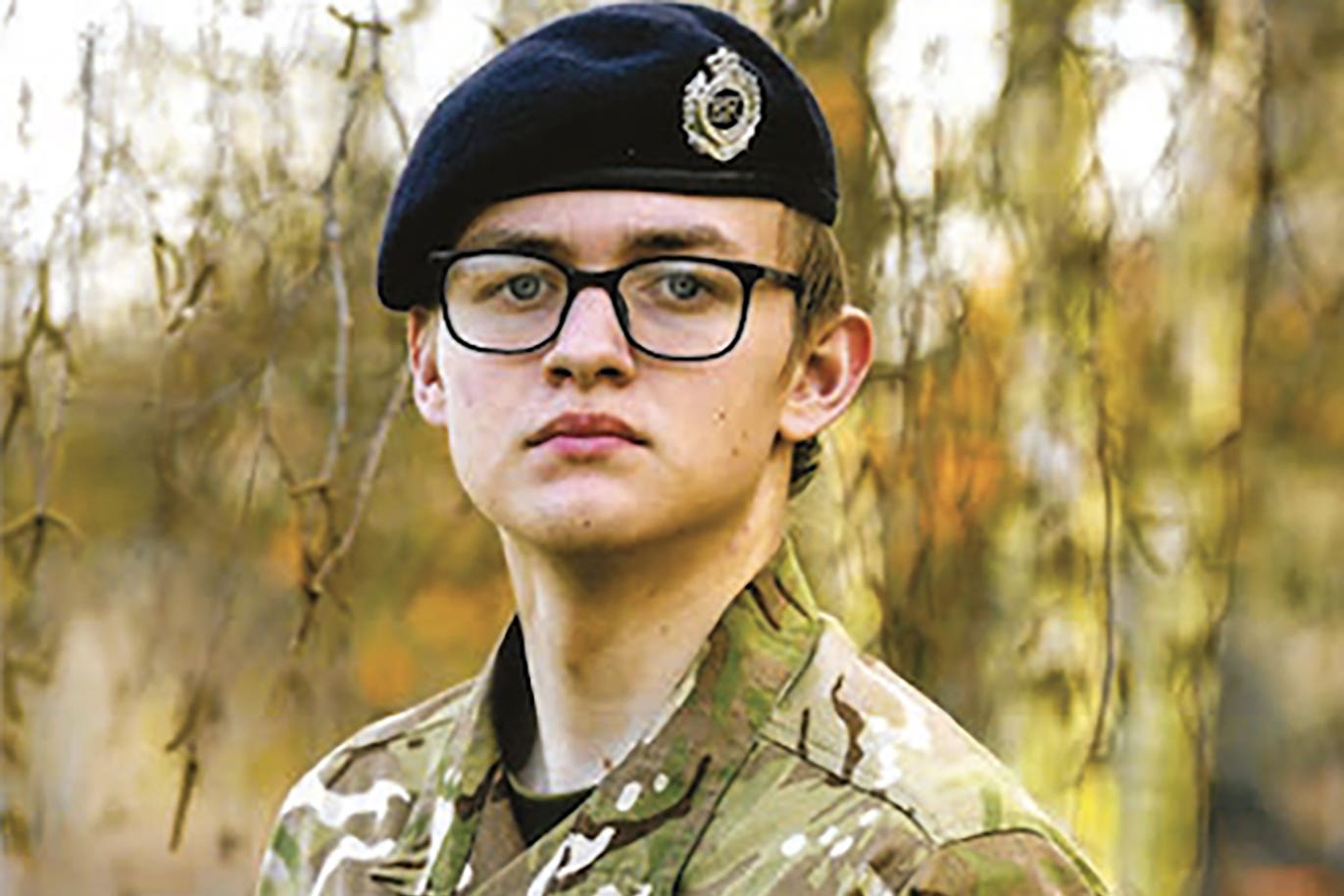Soldier who died from heatstroke may have survived if treated earlier, report says
Sapper Connor Morrison, 20, of 23 Parachute Engineer Regiment stationed in Woodbridge, Suffolk, collapsed during a group run

Your support helps us to tell the story
From reproductive rights to climate change to Big Tech, The Independent is on the ground when the story is developing. Whether it's investigating the financials of Elon Musk's pro-Trump PAC or producing our latest documentary, 'The A Word', which shines a light on the American women fighting for reproductive rights, we know how important it is to parse out the facts from the messaging.
At such a critical moment in US history, we need reporters on the ground. Your donation allows us to keep sending journalists to speak to both sides of the story.
The Independent is trusted by Americans across the entire political spectrum. And unlike many other quality news outlets, we choose not to lock Americans out of our reporting and analysis with paywalls. We believe quality journalism should be available to everyone, paid for by those who can afford it.
Your support makes all the difference.A soldier who died from heatstroke may have survived if he had been treated earlier, a report found.
Sapper Connor Morrison, 20, of 23 Parachute Engineer Regiment stationed in Woodbridge, Suffolk, collapsed during a group run on July 21 2022.
He was taken to hospital by the East of England Ambulance Service and spent time in intensive care and died two days later.
The symptoms displayed by Spr Morrison during the run were “consistent” with heatstroke, according to a service inquiry by a Defence Safety Authority panel who concluded “on the balance of probabilities Sapper Morrison’s cause of death was exertional heatstroke”.
The DSA report states: “There were sufficient indicators to support an immediate diagnosis of heatstroke but this was not acted upon immediately.
“The symptoms had become apparent during the latter stages of the run when participants had witnessed Spr Morrison’s inability, he was seen weaving from side-to-side.
“In the opinion of the panel this late diagnosis of heatstroke may have significantly reduced Spr Morrison’s chances of survival and was a contributory factor.”
His collapse followed several days of hot weather.
Before he collapsed Spr Morrison, who may have been anxious about serving in his new unit, was “observed to be struggling on the run whilst another soldier was encouraging him”.
Spr Morrison was running at a slower pace to others in the group but was able to hold conversation. He was encouraged by others during the run and was seen “weaving from side-to-side” before he collapsed, witnesses said.

There was no evidence to suggest he was in poor physical condition in July 22 although he had gained some weight since joining the regiment.
The DSA made 41 recommendations, as it sought to try to help reduce future risks while maintaining effective physical training.
It states: “From the point of collapse it became apparent that water would be needed to aid cooling.
“However, treatment for heat collapse was not initiated until 31 minutes after collapse and the only fluids available was water obtained by a nurse who took the decision to obtain some from a local shop, and that contained within 1 litre eye irrigation bottles carried within the ambulance.
“Had water been immediately available amongst the group, cooling treatment may have been initiated earlier.”
It is now recommended that units have water that is immediately available during physical activity, the report states.
The report panel stated: “When active measures were applied it may have been too late to be effective.
“Medical tests completed in the ambulance clearly indicated the effects of heatstroke in the body and established that Spr Morrison was in a life-threatening condition.”
Clinical decision-making was potentially hindered as there was mutual understanding of who was present and their respective medical abilities.
The panel found that the clinical guidance on heatstroke issued to ambulance personnel was insufficient.
Improved lesson planning and more thought about the composition of the group who took part in the session plus a formal heat checklist would have been helpful to have been in place.
An Army Spokesperson said: “Our thoughts and deepest sympathies remain with Sapper Morrison’s family and friends at this difficult time.
“We take our responsibilities as an organisation extremely seriously and are wholly committed to improving organisational learning to minimise the chances of repetition.
“We will review and action the recommendations made in the Service Inquiry report as a matter of urgency.”